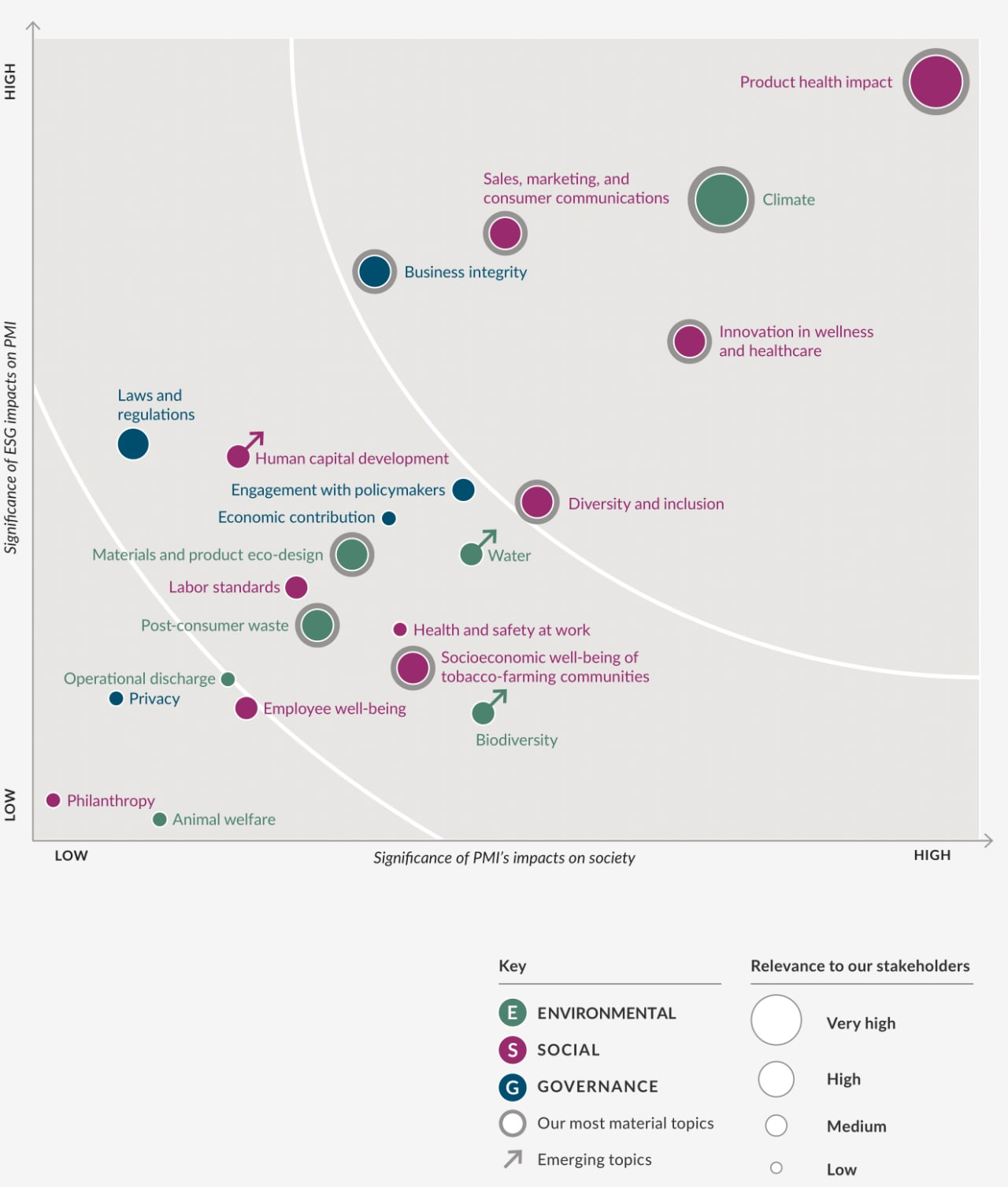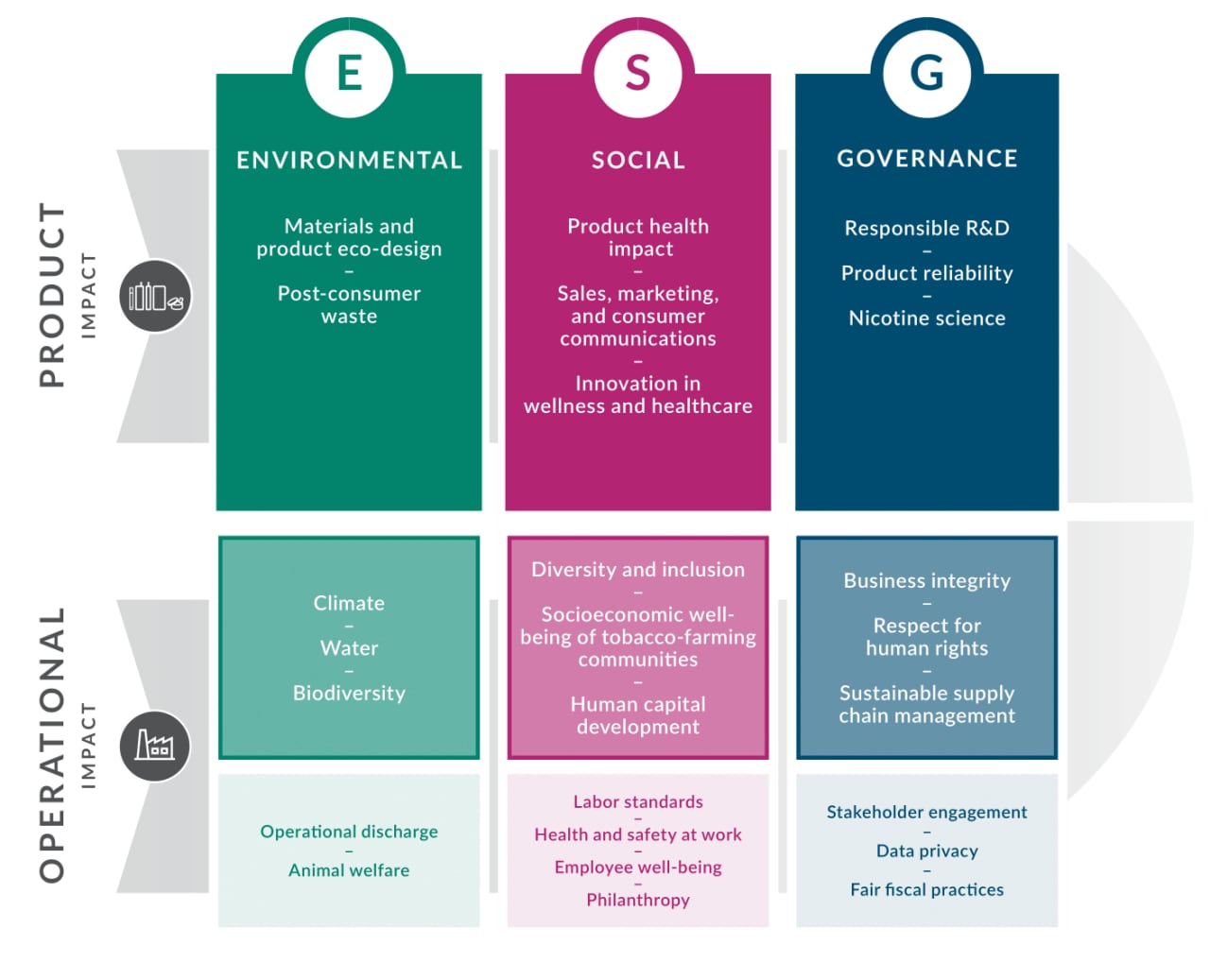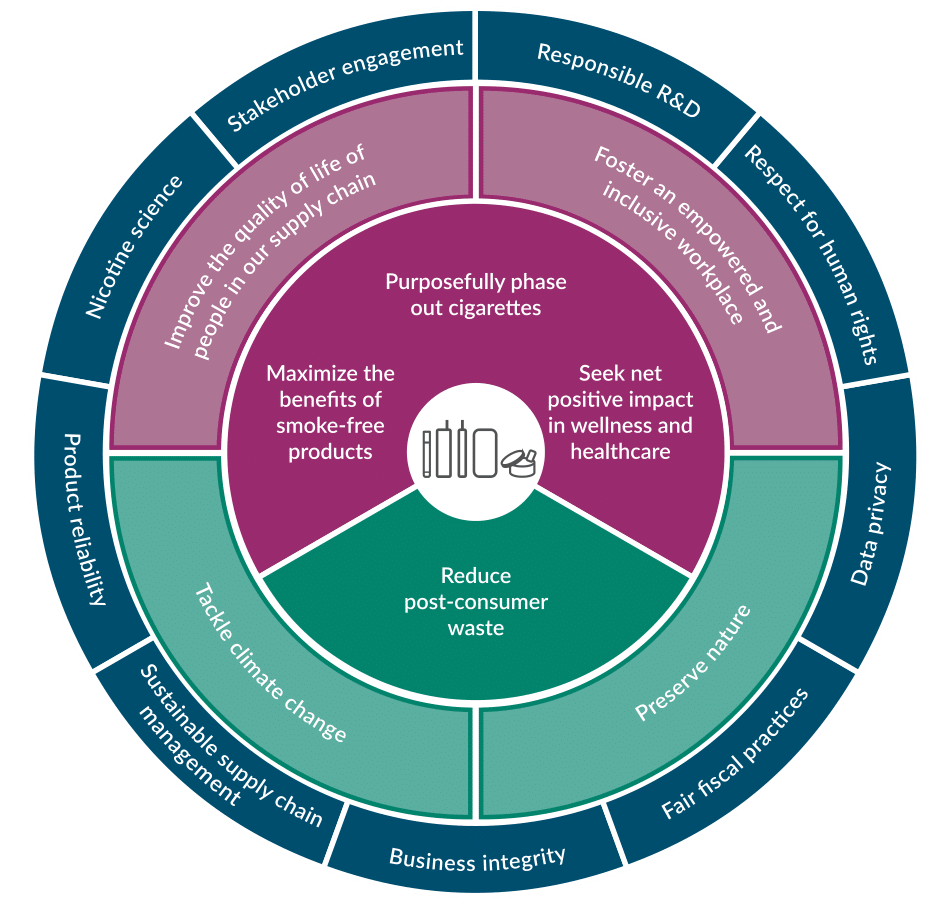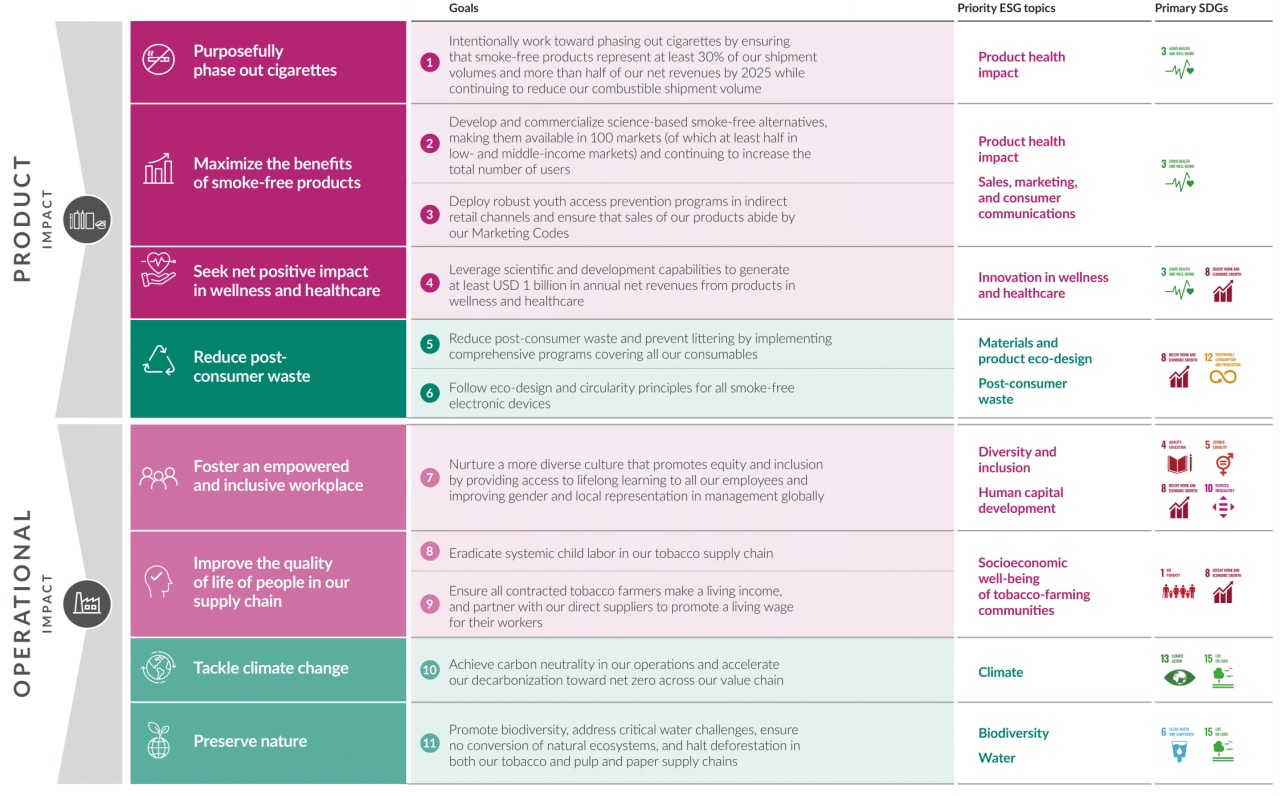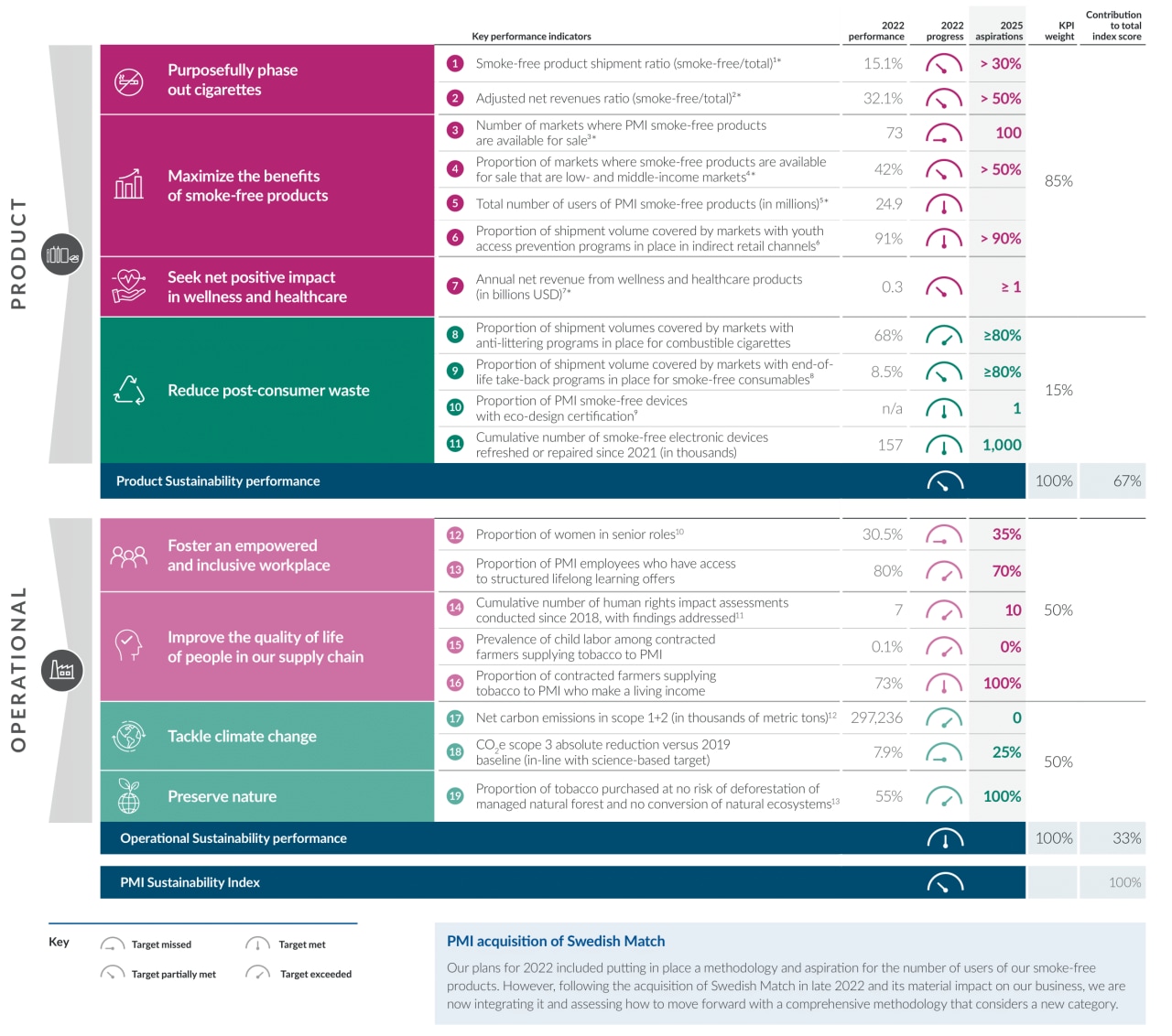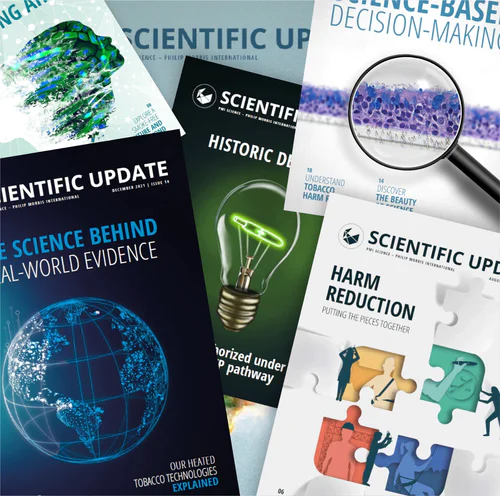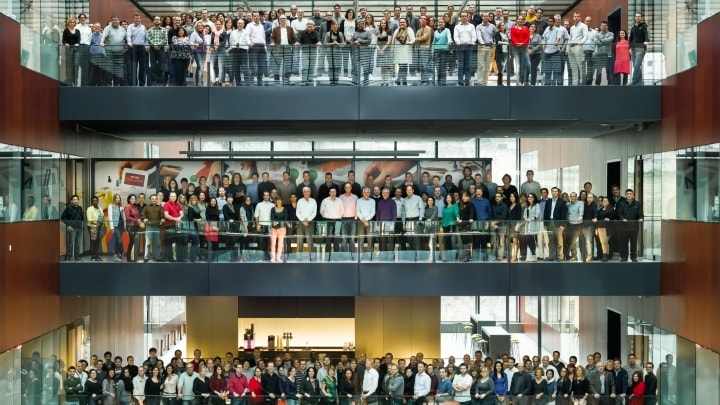What role does science play in sustainability at PMI?
The global sustainability issues we face require a deep understanding of their causes, how the issues are interrelated, and the actions we can take to remedy them. Science and technology can play an immense role in building the necessary knowledge and choosing our actions to maximize impact. At PMI, science and technology are already at the heart of our business transformation, centered around our vision of accelerating the end of smoking. It was only natural that we wanted to create objective, quantifiable, and importantly, verifiable metrics to measure and act on our environmental and social impacts through our sustainability strategy.
Can you tell us more about PMI’s approach to sustainability?
For a start, what is most particular is that our sustainability strategy per se is not separate from our corporate strategy or business strategy. These are really all the same things. To bring about our smoke-free vision, we integrate sustainability in everything we do and create value for society and all our stakeholders. Key to this approach is the need to replace cigarettes with smoke-free products that are scientifically substantiated to be less harmful alternatives for adult smokers who do not quit.
Importantly for us, when we think about sustainability, we see it as our competitive advantage, as an opportunity for innovation and growth, and how it gives our organization purpose and value. This is reflected in our sustainability materiality assessment, the first step in setting our sustainability strategy.
A sustainability materiality assessment is a formal process through which a company identifies, assesses, and prioritizes ESG topics. Our materiality assessment considers external indices, new academic research on sustainability practices, ESG policy and regulatory developments, and emerging best practices in the sustainability materiality field. Conducted periodically, a robust sustainability materiality assessment allows us to better understand and account for the impacts we have on society and the environment; the risks and opportunities that ESG issues may have on our business; and the views of our stakeholders around those ESG issues and where they expect our company to focus. The latest sustainability materiality assessment conducted during the second half of 2021 forms the foundation of our sustainability strategy.
PMI's sustainability materiality matrix.
Our sustainability materiality matrix was generated using all inputs gathered through the materiality assessment. We applied the results of the inward impact assessment—displaying those topics that carry the most significant risks and opportunities for PMI’s value creation—to inform the “Y” axis of the matrix. We used the insights of the outward impact assessment—highlighting where PMI can have the most significant impact on the planet and society—to build the “X” axis of the matrix.
Finally, we reflected the perspectives of our stakeholders by assigning different sizes to each topic bubble, depending on the importance attributed by the respondents to our survey and our interviewees. The topic “product health impact” ranked significantly higher than all other ESG topics on both the outward and inward impact assessments. We therefore slightly adjusted its placement to bring it closer to other topics on the matrix chart for readability purposes.
Our 2021 sustainability materiality assessment, and sustainability materiality assessments in general, also demonstrates that sustainability topics do not exist in a vacuum. They are often linked to one another, and their interdependencies—including the direction of causality and magnitude—must be considered as we craft appropriate solutions.
As you can see, a comprehensive sustainability materiality assessment helps us guide our work, identify synergies, and anticipate potential trade-offs. We plan to conduct a comprehensive sustainability materiality assessment every 3 to 4 years.
What ESG topics are relevant to PMI?
What is key for us at PMI is that our sustainability materiality assessment is based on an exhaustive list of ESG topics covering all areas that are potentially relevant to our business. Below is our ESG framework highlighting the topics we have decided to focus and prioritize our resources on. This framework not only classifies the different topics by environmental, social, or governance nature, but it also creates a distinction in terms of recognizing that there are certain impacts that derive from our products (what we produce), and there are certain impacts that derive from our operations (how we produce).
Having both the product and operational views is important because in creating this distinction, there can be clarity in terms of how we pass information through our reports and, importantly, the kind of discussions that we have and the kind of partnerships that we build to address the different impacts, either for operations or of the products that we sell. It helps to ensure that our efforts remain focused on those areas where we can have the greatest impact.
What is PMI’s sustainability strategy?
To address the different issues and topics identified in our sustainability materiality report and outlined in our ESG framework, we have developed our sustainability strategy as can be seen with the circle below which presents our operational impacts and the plan of action in place to address these.
PMI’s sustainability strategy circle outlining our approaches to addressing the social and environmental impacts of our products.
The health impact of cigarette smoking is the most significant and pressing negative externality our strategy aims to address. So, addressing the social impacts of our products first is the priority of our sustainability strategy, as well as our business and transformation strategy, which is why it sits at the core. With this in mind, we must focus our resources to innovate and develop solutions that can contribute to solving the health impact of cigarette smoking.
This product approach represents an opportunity for growth and our strongest competitive advantage. Lessening this impact of cigarette smoking is the most valuable societal contribution we can make and is the cornerstone of PMI’s purpose and business strategy.
As you can see from the circle, addressing this issue requires a four-pronged approach:
- Maximize the benefits of smoke-free products: Research, develop, and commercialize nicotine-containing products that are scientifically substantiated to be less harmful than cigarettes. An example of our long-term research and development efforts can be seen with the 30 years of innovation behind our leading heated tobacco product, THS.
- Purposefully phase out cigarettes: Work to make cigarettes obsolete, with the aim that smoke-free products ultimately replace cigarettes for those who continue to use nicotine, driving their obsolescence.
- Seek net positive impact in wellness and healthcare: Despite its critical importance, achieving a smoke-free future is not our final horizon. We are also exploring adjacent opportunities for growth in wellness and healthcare, leveraging the capabilities we have accrued and developed while transforming our business. It is through these emerging opportunities that we will achieve our ultimate goal.
- Reduce postconsumer waste: At the top of mind is the life cycle of our products. What happens with our products after they are consumed? Where do they go and how do we manage that waste? How can we improve circularity where a product is renewed? How can we design for better sustainability?
Building on these approaches, we have developed strategies for operational impact such as tackling climate change and preserving nature. This distinction is important because as we all become more aware of the impacts of climate change, it becomes very evident that reducing greenhouse gas emissions is not enough. Preserving natural ecosystems and protecting the environment are also paramount, and that is why having a strong biodiversity strategy addressing issues related to deforestation, water stewardship, preventing soil degradation, and more, is especially important to maximize the value that we are building with overall environmental strategies. We have also established social strategies to improve the quality of life of the people in our supply chain and workplace.
Based on such strategies, we have formulated eight approaches targeting our most pressing areas of impact and established 11 goals, which form the basis of our 2025 Roadmap as can be seen below.
Our roadmap offers direction to our leadership by clearly outlining the social and environmental impacts we aim to achieve with these strategies in relation to both our products and our business operations. We believe our business can and must help to achieve the UN Sustainable Development Goals (SDGs) adopted in 2015. Accordingly, we have explicitly linked each of our eight strategies to the SDG(s) to which it aligns and can contribute towards achieving.
PMI’s 2025 sustainability roadmap outlines our key goals identified by our sustainability materiality assessment.
Connected to this, PMI introduced in 2022 a bespoke tool that we call Sustainability Index. The Sustainability Index is composed of 19 KPIs.
PMI’s 2025 sustainability roadmap outlines our key goals and aims to address our priority ESG topics identified by our sustainability materiality assessment.
These 19 KPIs are connected to our eight strategies, and importantly, they measure progress towards our goals. The reason we created this index is because we wanted to create metrics that can allow all our stakeholders and the public to understand how we define success, how do we measure progress, and what it is that we are expecting to achieve.
Using predefined target ranges, we assess and award a score to each KPI annually. Thereafter, using a weight assigned to each KPI (informed by the results of our sustainability materiality assessment), we calculate the total Sustainability Index score which is communicated each fiscal year. Learn more about how sustainability underpins our transformation in our latest integrated report.

